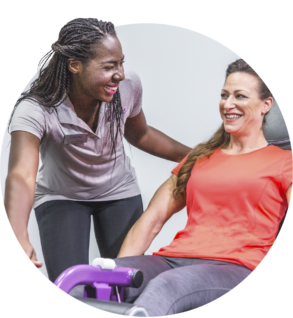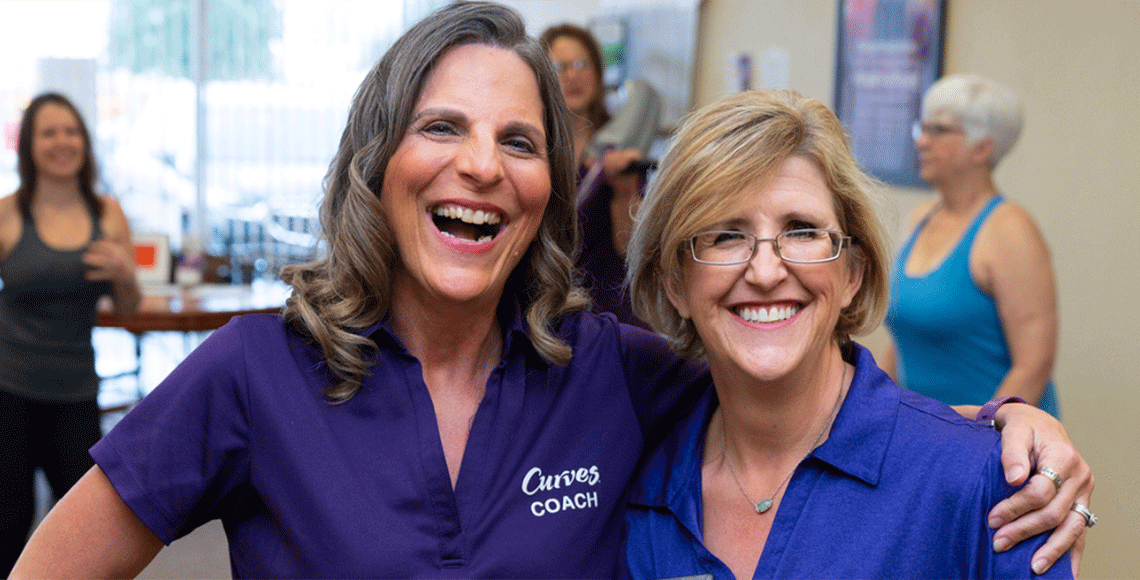Why Exercise is Good for Anxiety
Between our children, our parents, and our jobs, we have a lot to juggle as women. Which also means we have a lot to worry about. It’s no wonder anxiety disorders are the most common mental health concerns in recent years. In fact, nearly one in five adults suffer from anxiety.1
If you’re among those feeling anxious, first, take comfort in knowing you’re not alone. Chances are, you have a friend, neighbor, or sister who has anxiety, too. In fact, women are twice as likely to suffer from anxiety as men.2
Left untreated, anxiety can lead to other mental health issues such as depression and raise your risk of diabetes and heart disease. So, it’s important to get it under control.3
Luckily, there are things you can do to help with anxiety. For one, you can exercise for mental health. Engaging in a full body workout that includes both strength training and aerobic activity, like the Curves Circuit, is great for anxiety.
What’s the connection between exercise and anxiety relief?
It’s helpful to exercise for mental health for a few reasons. Here are some of the most important:
- Anxiety and exercise usually don’t happen at the same time. When you’re in the middle of the Curves Circuit, working out next to like-minded women, you probably won’t think about the things you are anxious about. As you focus on your workout, you interrupt the flow of worries or anxious thoughts and ground your body and your mind.4
- Working out keeps you in the moment. One of the great benefits of exercise on mental health is that it promotes mindfulness, and mindfulness is pretty much the opposite of anxiety. As you work out, focus your attention on the sensations throughout your body—your feet hitting the ground, the rhythm of your breathing, and the strength of your muscles as they go through the reps.5
- Exercise lowers anxiety with full-body tension relief. When you move your body, you decrease tension in your muscles, which lowers mental tension, too.6
- Cardiovascular exercise causes chemical changes that lower anxiety. When your heart rate goes up during the Curves Circuit, your brain releases anti-anxiety chemicals that help you relax and feel good.7
- Exercise helps you stay calm. When you sweat it out at Curves, you activate the frontal regions of your brain, which help control the reacting system to real or imagined threats. So, by exercising, you prevent yourself from overreacting and getting anxious.8
- Working out builds physical and mental resilience. Not only does a regular exercise routine bolster you physically, it also builds resilience against the emotional rollercoaster that can promote anxiety.9
To maximize the benefits of exercise and anxiety relief, do the following:
- Start small. If you haven’t been exercising, the last thing you want to do is create more worry and anxiety by jumping into an intense routine you’re not ready for. The Curves workout adjusts to your intensity, so you can tailor your routine to your current fitness needs.
- Exercise when you’re at your best. If you’re a morning person, try to hit Curves in the a.m. If you feel peppy in the evening, do your full body workout closer to when the sun goes down. Try to schedule your workouts for the time you feel most energetic and motivated.
- Work out in a group. When you work out in a group or with friends who support you and cheer you on, you get the added benefits of social support, which can help lower anxiety even more.10
- There are many medicinal and therapeutic treatments for anxiety, but for some women, a regular exercise routine that includes strength training and aerobic exercise may be what the doctor ordered. The psychological benefits of exercise are powerful. You know you feel good after you work out. You know exercising helps distract you from unnecessary worry and stress. And you know your full body workout helps you get stronger in both your body and mind. If you have anxiety and haven’t already been exercising, the best time to start is now.
For more information about Curves women’s gyms, visit ‘Why Curves’ or find your local Curves gym here and talk to one of our Curves Coaches about starting your fitness journey today!
Sources:
- Anxiety Disorders | NAMI: National Alliance on Mental Illness
- Facts & Statistics | Anxiety and Depression Association of America, ADAA
- Can exercise help treat anxiety? – Harvard Health
- Can exercise help treat anxiety? – Harvard Health
- Can exercise help treat anxiety? – Harvard Health
- Can exercise help treat anxiety? – Harvard Health
- Can exercise help treat anxiety? – Harvard Health
- Can exercise help treat anxiety? – Harvard Health
- Can exercise help treat anxiety? – Harvard Health
- Can exercise help treat anxiety? – Harvard Health






